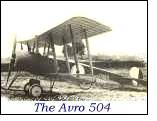The Rotary Revolution
No description of the airplanes of the Edwardian and First World War era is complete without some explanation of the design and function of the rotary engine. Understandably many people are not familiar with this early aviation power unit and confuse it with the Wankel engine developed in the nineteen sixties and seventies. This is also called a rotary engine, but works on a completely different principle involving intricately shaped rotors working within a precisely machined combustion chamber. This enjoyed some success and was briefly used by the Mazda automobile company and a few motorcycle companies. Experiments continue, including a modern aviation application for use in very light aircraft.
Our rotary was a very different beast however. When Laurent and Louis Seguin introduced their 50 hp, seven cylinder, air cooled engine in France in 1908 it was the answer to the airplane designers prayers. It was lighter, more powerful and reliable when compared to its conventional rivals. Superficially similar to a modern radial it worked on a radically different, some might say bizarre principal. Instead of the engine being fixed to the frame of the airplane with the crank rotating to turn the propeller, the Gnome had the crankshaft bolted to the airframe with the cylinders and associated valve gear turning round it. The propeller was bolted to the crankcase and revolved with it.
The Seguin brothers adopted this approach almost through desperation to solve one problem that had plagued designers and pilots alike - cooling. Liquid cooled engines usually ran well, but the weight of radiators and coolant was such that many early machines could not drag themselves off the ground. Air-cooling seemed to be the obvious answer but early engines ran far too hot. For example, Louis Bleriot only managed to cross the English Channel because a sudden rain shower cooled his struggling air-cooled engine. The adapted motorcycle engine that Will Turner and Henry Walker use in their home made machine, featured in The Aviator's Apprentice, suffers a similar fate. Inadequate cooling means that it is on the point of failure when Will concludes his first and only flight in the Florida Flyer. By making the cylinders of the Gnome engine revolve at high speed the Seguins created their own cooling air-flow.
This approach had some significant disadvantages. The fuel supply was inevitably difficult. Gasoline was sucked through a crude carburetor at the end of the hollow crankshaft where it was compressed within the crankcase by the action of the pistons rising and falling in the cylinders in a similar fashion to a two-cycle engine. The gasoline - air mixture entered the combustion chamber either through an inlet valve in the piston crown, or via ports cut in the cylinder walls in some designs. The result was that a conventional power control, or throttle, was impossible. The rotary, more or less, was either stopped or running at full power. Limited speed control was available by adjusting levers that controlled the air and fuel supply separately, or by the use of the cut out button, or "blip switch" as it was popularly known. This effectively switched the ignition on and off. The danger was unburned fuel, that continued to be flung from the whirling cylinders, would be ignited when the engine was turned back on by the release of the switch. Lubrication was by a constant loss supply of castor oil. The fumes from this were a constant source of problems for pilots. The laxative effect often forcing flights to be terminated long before the fuel supply ran low.
In some designs the twisting or torque effect, produced in reaction to the spinning mass of cylinders and machinery, gave the airplanes they were fitted to significant handling peculiarities. This tendency was most famously exploited by pilots of the Sopwith Camel who could almost turn their machines in their own length once they had mastered this feature. Sadly many were killed before they could deal with it as their machines spun out of control, usually in take off accidents.
 In spite of these problems the rotary was a huge success. Various versions, all conforming to the basic principal, were built by the Gnome, Clerget, Le Rhone and Bentley factories. They were also produced under license by companies such as Oberuersel in Germany and Thulin in Sweden. They powered such famous machines as the Avro 504, the DH2, the Sopwith Pup, Camel and Snipe, the French Nieuport series and many less well known machines. The German airforce, while favoring big liquid cooled Mercedes engines, used the rotary to great effect in the Fokker Eindekker and the Fokker Triplane, favorite mount of Manfred Von Richtofen, The Red Baron.
In spite of these problems the rotary was a huge success. Various versions, all conforming to the basic principal, were built by the Gnome, Clerget, Le Rhone and Bentley factories. They were also produced under license by companies such as Oberuersel in Germany and Thulin in Sweden. They powered such famous machines as the Avro 504, the DH2, the Sopwith Pup, Camel and Snipe, the French Nieuport series and many less well known machines. The German airforce, while favoring big liquid cooled Mercedes engines, used the rotary to great effect in the Fokker Eindekker and the Fokker Triplane, favorite mount of Manfred Von Richtofen, The Red Baron.
At the end of the First World War the rotary disappeared within a few years. Too unreliable and with a fearsome appetite for fuel and oil, it could not compete with the next generation aero engines. Today there are very few places where you can hear the thrilling snarl of a Gnome or Clerget, or catch the evocative aroma of burnt castor oil. However, it is possible. At Old Rhinebeck in New York State, and The Shuttleworth Trust near Bedford in England, Sopwiths, Nieuports and Fokker Triplanes can be seen and heard as they go through their paces for the crowds. It's an experience not to be missed!



